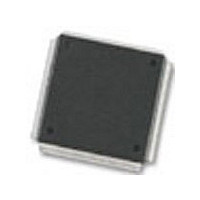MC68376BAMFT20 Freescale Semiconductor, MC68376BAMFT20 Datasheet - Page 158

MC68376BAMFT20
Manufacturer Part Number
MC68376BAMFT20
Description
Manufacturer
Freescale Semiconductor
Datasheet
1.MC68376BAMFT20.pdf
(434 pages)
Specifications of MC68376BAMFT20
Cpu Family
68K/M683xx
Device Core
ColdFire
Device Core Size
32b
Frequency (max)
20MHz
Interface Type
QSPI/SCI
Program Memory Type
ROM
Program Memory Size
8KB
Total Internal Ram Size
7.5KB
# I/os (max)
18
Number Of Timers - General Purpose
2
Operating Supply Voltage (typ)
5V
Operating Supply Voltage (max)
5.25V
Operating Supply Voltage (min)
4.75V
On-chip Adc
16-chx10-bit
Instruction Set Architecture
RISC
Operating Temp Range
-40C to 125C
Operating Temperature Classification
Automotive
Mounting
Surface Mount
Pin Count
160
Package Type
PQFP
Lead Free Status / Rohs Status
Not Compliant
Available stocks
Company
Part Number
Manufacturer
Quantity
Price
Company:
Part Number:
MC68376BAMFT20
Manufacturer:
FREESCAL
Quantity:
245
- Current page: 158 of 434
- Download datasheet (7Mb)
9.3.2.3 Command RAM
9.3.3 QSPI Pins
9.3.4 QSPI Operation
9-8
MOTOROLA
Command RAM is used by the QSPI in master mode. The CPU32 writes one byte of
control information to this segment for each QSPI command to be executed. The QSPI
cannot modify information in command RAM.
Command RAM consists of 16 bytes. Each byte is divided into two fields. The periph-
eral chip-select field enables peripherals for transfer. The command control field pro-
vides transfer options.
A maximum of 16 commands can be in the queue. Queue execution by the QSPI pro-
ceeds from the address in NEWQP through the address in ENDQP (both of these
fields are in SPCR2).
The QSPI uses seven pins. These pins can be configured for general-purpose I/O
when not needed for QSPI application.
Table 9-2 shows QSPI input and output pins and their functions.
The QSPI uses a dedicated 80-byte block of static RAM accessible by both the QSPI
and the CPU32 to perform queued operations. The RAM is divided into three seg-
ments. There are 16 command bytes, 16 transmit data words, and 16 receive data
words. QSPI RAM is organized so that one byte of command data, one word of trans-
mit data, and one word of receive data correspond to one queue entry, $0–$F.
The CPU32 initiates QSPI operation by setting up a queue of QSPI commands in com-
mand RAM, writing transmit data into transmit RAM, then enabling the QSPI. The
QSPI executes the queued commands, sets a completion flag (SPIF), and then either
interrupts the CPU32 or waits for intervention.
There are four queue pointers. The CPU32 can access three of them through fields in
QSPI registers. The new queue pointer (NEWQP), contained in SPCR2, points to the
first command in the queue. An internal queue pointer points to the command currently
being executed. The completed queue pointer (CPTQP), contained in SPSR, points to
the last command executed. The end queue pointer (ENDQP), contained in SPCR2,
points to the final command in the queue.
Peripheral Chip Selects
Master In Slave Out
Master Out Slave In
Slave Select
Serial Clock
Pin Names
Mnemonics
PCS0/SS
PCS[3:1]
MISO
MOSI
SCK
QUEUED SERIAL MODULE
Table 9-2 QSPI Pins
Master
Master
Master
Master
Master
Master
Mode
Slave
Slave
Slave
Slave
Serial data input to QSPI
Serial data output from QSPI
Serial data output from QSPI
Serial data input to QSPI
Clock output from QSPI
Clock input to QSPI
Select peripherals
Selects peripherals
Causes mode fault
Initiates serial transfer
Function
USER’S MANUAL
MC68336/376
Related parts for MC68376BAMFT20
Image
Part Number
Description
Manufacturer
Datasheet
Request
R
Part Number:
Description:
Manufacturer:
Freescale Semiconductor, Inc
Datasheet:
Part Number:
Description:
Manufacturer:
Freescale Semiconductor, Inc
Datasheet:
Part Number:
Description:
Manufacturer:
Freescale Semiconductor, Inc
Datasheet:
Part Number:
Description:
Manufacturer:
Freescale Semiconductor, Inc
Datasheet:
Part Number:
Description:
Manufacturer:
Freescale Semiconductor, Inc
Datasheet:
Part Number:
Description:
Manufacturer:
Freescale Semiconductor, Inc
Datasheet:
Part Number:
Description:
Manufacturer:
Freescale Semiconductor, Inc
Datasheet:
Part Number:
Description:
Manufacturer:
Freescale Semiconductor, Inc
Datasheet:
Part Number:
Description:
Manufacturer:
Freescale Semiconductor, Inc
Datasheet:
Part Number:
Description:
Manufacturer:
Freescale Semiconductor, Inc
Datasheet:
Part Number:
Description:
Manufacturer:
Freescale Semiconductor, Inc
Datasheet:
Part Number:
Description:
Manufacturer:
Freescale Semiconductor, Inc
Datasheet:
Part Number:
Description:
Manufacturer:
Freescale Semiconductor, Inc
Datasheet:
Part Number:
Description:
Manufacturer:
Freescale Semiconductor, Inc
Datasheet:
Part Number:
Description:
Manufacturer:
Freescale Semiconductor, Inc
Datasheet:











